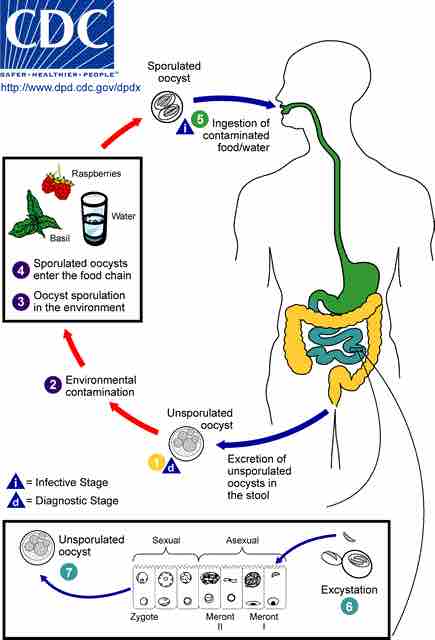Cyclospora Diarrheal Infection

Life cycle of cyclospora
Cyclosporiasis (Cyclospora cayetanesis) When freshly passed in stools, the oocyst is not infective (1) (thus, direct fecal-oral transmission cannot occur; this differentiates Cyclospora from another important coccidian parasite, Cryptosporidium). In the environment (2), sporulation occurs after days or weeks at temperatures between 22°C to 32°C, resulting in division of the sporont into two sporocysts, each containing two elongate sporozoites (3). Fresh produce and water can serve as vehicles for transmission (4) and the sporulated oocysts are ingested (in contaminated food or water) (5). The oocysts excyst in the gastrointestinal tract, freeing the sporozoites which invade the epithelial cells of the small intestine (6). Inside the cells they undergo asexual multiplication and sexual development to mature into oocysts, which will be shed in stools (7). The potential mechanisms of contamination of food and water are still under investigation.
Source
Boundless vets and curates high-quality, openly licensed content from around the Internet. This particular resource used the following sources: